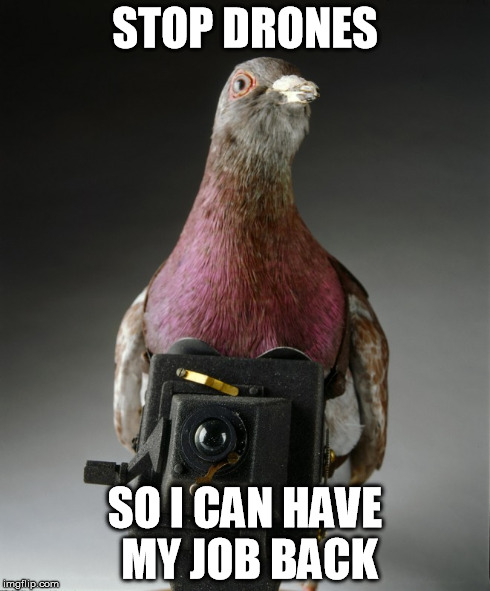It looks like you're using an Ad Blocker.
Please white-list or disable AboveTopSecret.com in your ad-blocking tool.
Thank you.
Some features of ATS will be disabled while you continue to use an ad-blocker.
14
share:
Have a seat, hit play, and browse this awesome collection of spy gear. Some of these are pretty fascinating, especially for their time. If they didn't have what they needed, it was engineered from scratch in order to complete the mission. I compiled them in list form without any fancy commentary. Please delete thread if this stuff was already posted before.
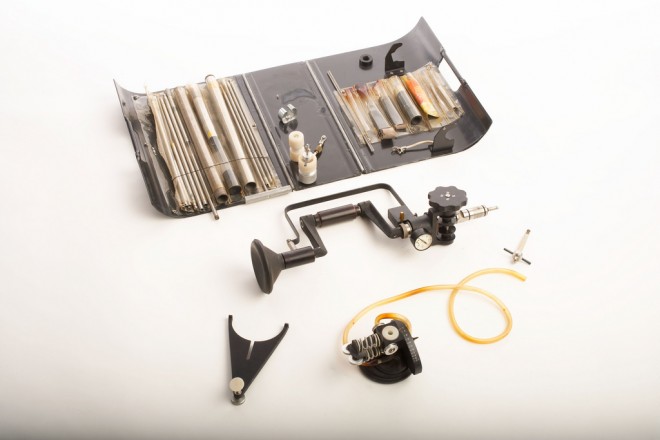
"Belly Buster" Hand-Crank Audio Drill
The CIA used the “Belly Buster” drill during the late 1950s and early 1960s to drill holes into masonry in order to implant listening devices. After assembly, the base of the drill was held firmly against the stomach, while the handle was cranked manually. The kit came with several drill bits and accessories.
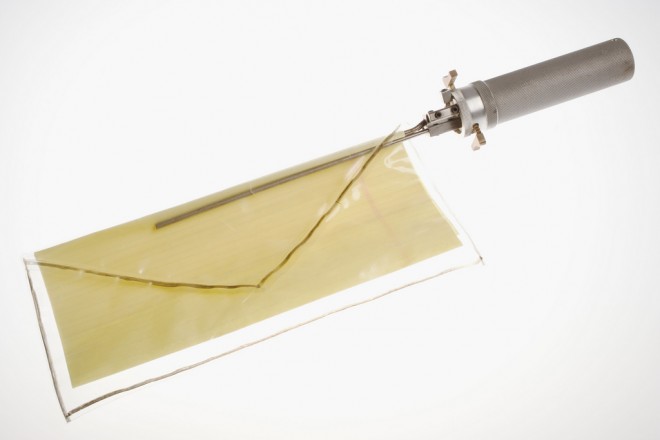
Letter Remover
Special devices were used in World War II to retrieve letters from envelopes without disturbing their seals. The pincer-like device was inserted into the unsealed gap at the top of the envelope flap, then turned to wind up the letter and extract it from the envelope.
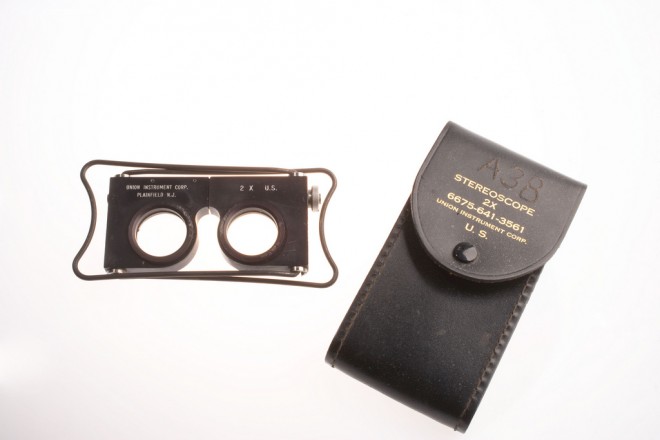
Stereoscope and Case
The stereoscope, used during World War II, helped Allied photo analyzers examine images of enemy territory taken by airplane-mounted cameras. It allowed them to view the film in 3-D.
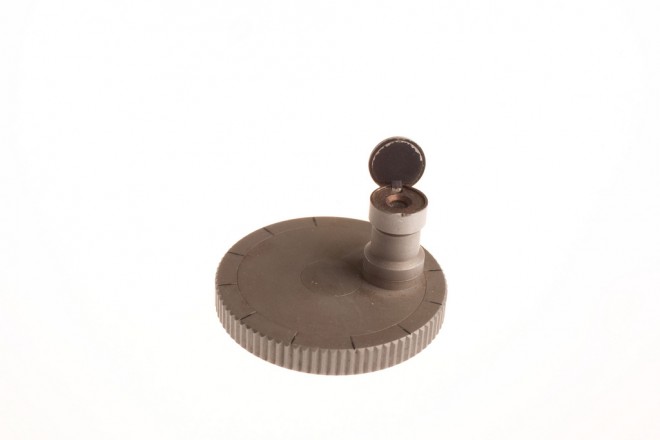
Microdot Camera
Transferring secret documents during the Cold War was aided by this microdot camera that could photograph and reduce whole pages of information onto a tiny piece of film the size of a sentence period. The film could then be embedded into otherwise banal correspondence as punctuation at the end of a sentence. Microdots were also hidden in rings, hollow coins and other items. The recipient would read the microdot with a special viewer.
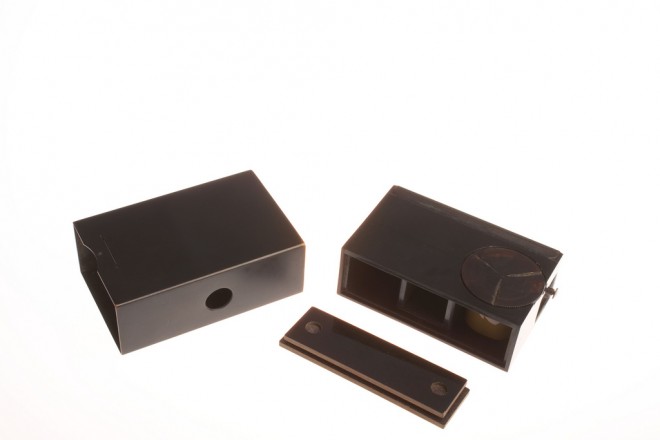
"Matchbox" Camera
The Eastman Kodak Company developed and manufactured this camera for the Office of Strategic Services (OSS). Made in the shape of matchboxes that were used at the time, it could be disguised by adding matchbox labels in various languages and styles that were relevant to the country in which it was to be used.

Cyanide Specs
Choosing death over torture, a captured spy in the 1970s could chew on the tip of these CIA-issued spectacles to get at a cyanide pellet hidden inside.
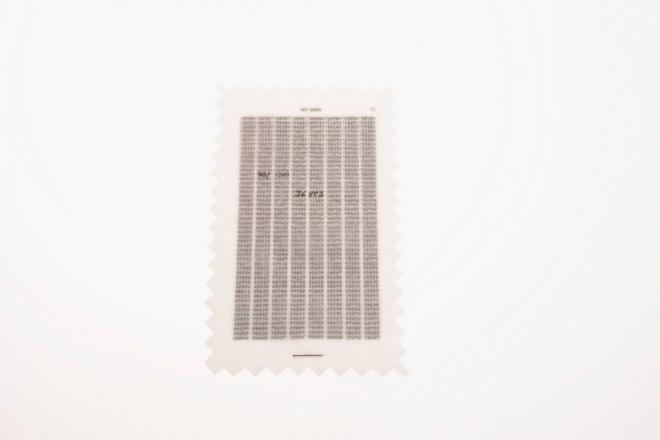
Single-Use Encoder Pads
One-time pads (OTP) were issued in matching sets of two for encoding: one set was for the encoder and one for the decoder. No two pages were alike. Each sheet contained a random key in the form of five-digit groups. Once a sheet was used to encode a message, it was torn off the pad and destroyed. Because the codes were used only once, they were virtually unbreakable.
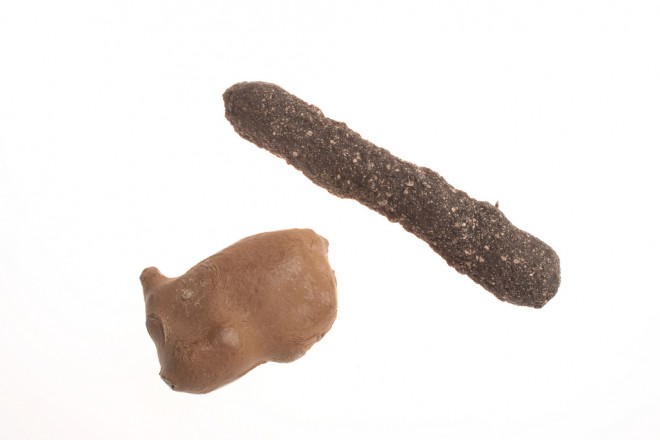
Seismic Intruder Detection Device
This Cold War-Era intrusion detector was designed to blend in with the terrain. It can detect movement of people, animals, or objects up to 300 meters away. The device is powered by tiny power cells and has a built-in antenna. Its transmitter relays data from the device findings via coded impulses.
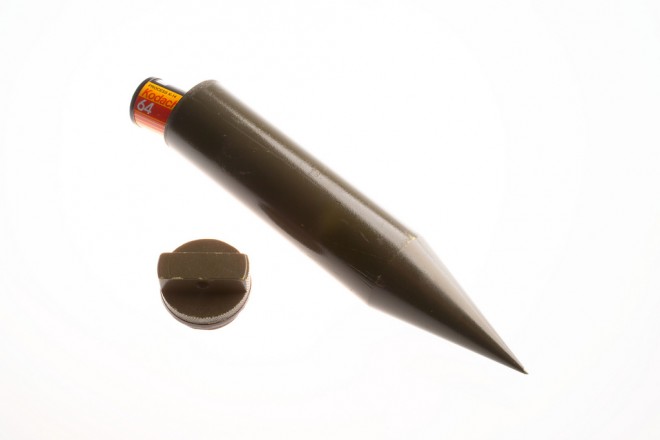
“Dead” Drop Spike
Used to facilitate secure communication between an agent and his/her handler, the spike, containing documents or film, could be pushed into the ground by the agent at a pre-arranged spot and later retrieved by a handler.
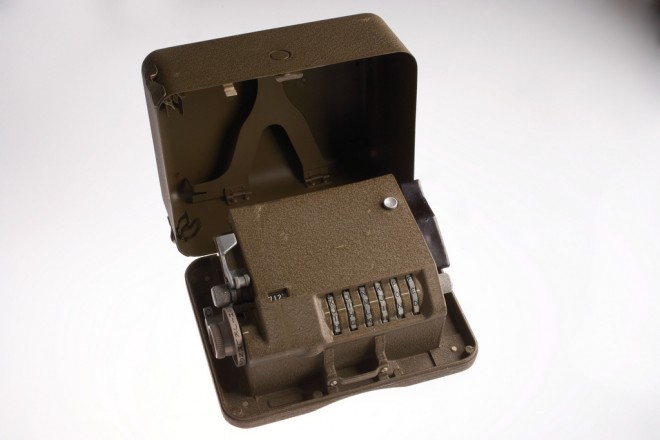
M-209 Cipher Box
A mechanical cipher device designed by Boris Hagelin that was widely used by the U.S. Army during World War II. Compact and portable, it used a series of rotors to encode and decode secret military messages.
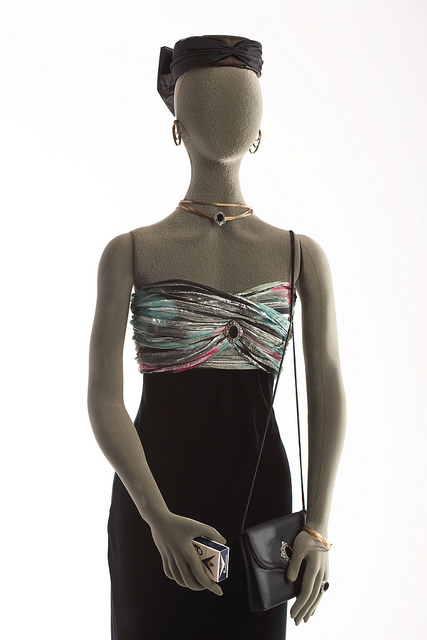

Surveillance Fashion
For the female mole attending a black-tie affair, surveillance equipment didn't have to be dowdy. This "couture" outfit from the Office of Technical Readiness allowed spies to munch on canapes and dance a waltz while still snapping surreptitious pics and recording cocktail chatter.

Code in a Compact
A female agent could powder her nose while sneaking a surreptitious peak at code hidden in the mirror of this handy dual-use compact. When tipped at a certain angle, the code was visible in the mirror.

A-12 Spurs
These "spurs," worn on airplanes, strapped over boot heels and were each attached to a ball connected to a cable beneath the plane seat. If the pilot had to pull the "D" ring (ejection handle) in an emergency, the cables would snap the wearer's feet back under the seat to ensure a smooth and safe ejection from the aircraft.
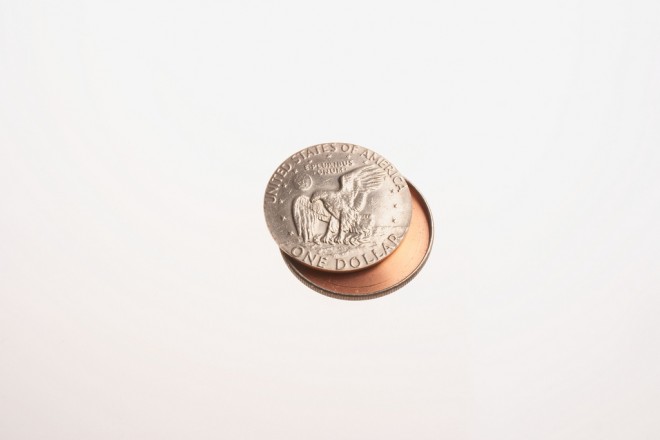
Silver Dollar Concealer
A view of the inside of the silver dollar, which could be used to conceal secret messages or film.

Fairbairn-Sykes Fighting Knife
Introduced in 1941, the knife is named after its British designers, Captains W.E. Fairbairn and E.A. Sykes. Here pictured with its sheath (at left), the weapon was crafted to strike at the most vulnerable parts of an opponent’s body.

Minox Camera
Walter Zapp, a Latvian engineer, developed a portable camera in 1937 that would fit easily into the palm of a hand and take high-quality pictures. Originally made from steel in Riga, it was considered a marvel of technology and became the world’s most widely used spy camera.

Tire Spike
No matter how the caltrop tire spike was tossed on a roadway or airport runway, it would land with a tire-puncturing prong facing upward.
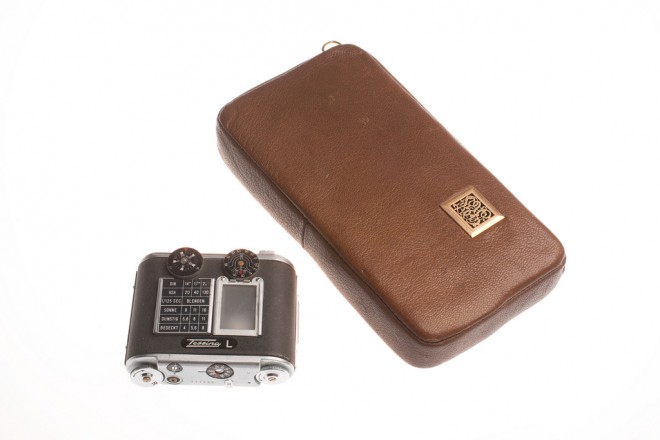
Tobacco Pouch Camera
A miniature 35mm film camera manufactured in Switzerland was concealed in this modified tobacco pouch. A spring-wound mechanism advanced the film between exposures.
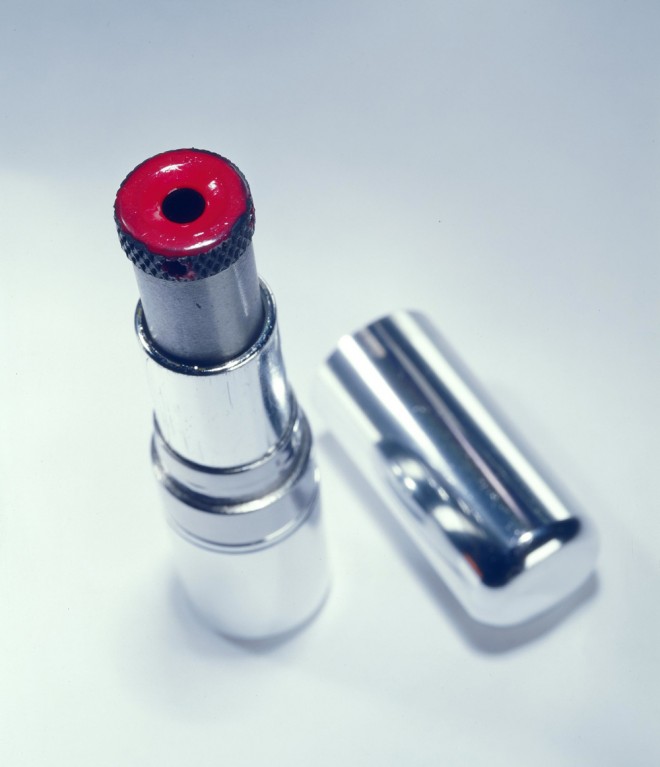
Kiss of Death
For the spy-op gone bad, or simply for any Natscha who found herself out to dinner with the date from hell, this Cold War-era KGB lipstick gun delivered the kiss of death with a single 4.5mm shot.
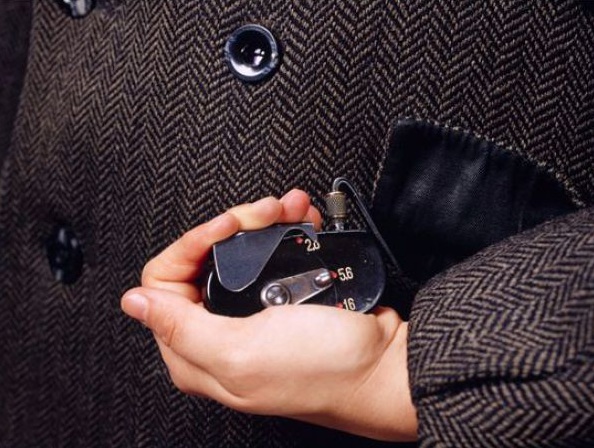
Button Cam
Ajax was the codename for this hidden coat camera issued by the KGB around 1970. The lens was embedded in the double-breasted jacket's right middle button.
To snap a surreptitious picture, the spy would squeeze a shutter cable hidden in the coat pocket, triggering the fake button to open for the lens. This was one of several models of buttonhole cameras widely used in the Soviet Union, Europe and North America.

Seriously Savage Rectal Houdini Kit
It's a toss-up which would be worse, getting caught by the enemy or having the cap on this rectal escape kit pop off unexpectedly in a spy's caboose. The kit was issued by the CIA in the 1960s.
Sorry, I just had to comment on this one. No amount of laxative will make that pass easier. Refrain from coughing, sneezing or running.
Continued...
edit on 21-11-2014 by eisegesis because: (no reason given)
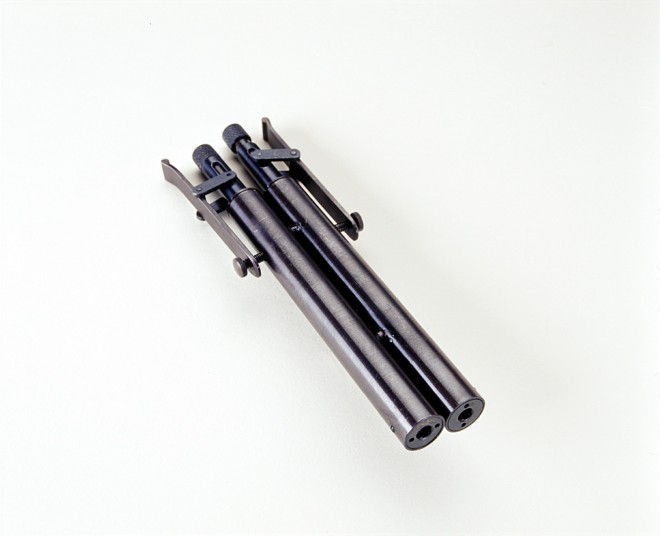
Cyanide Gas Gun
A gas gun similar to this one was used by KGB officer Bogdan Stashinsky to assassinate two Ukrainian dissidents — Lev Rebet and Stepan Bandera — in Germany in 1957 and 1959.
The gun, which Stashinsky concealed in a rolled-up newspaper, exploded hydrogen from a crushed cyanide capsule into the victim's face, causing him to go into cardiac arrest.
Stashinsky later defected to Germany and confessed to the crimes.
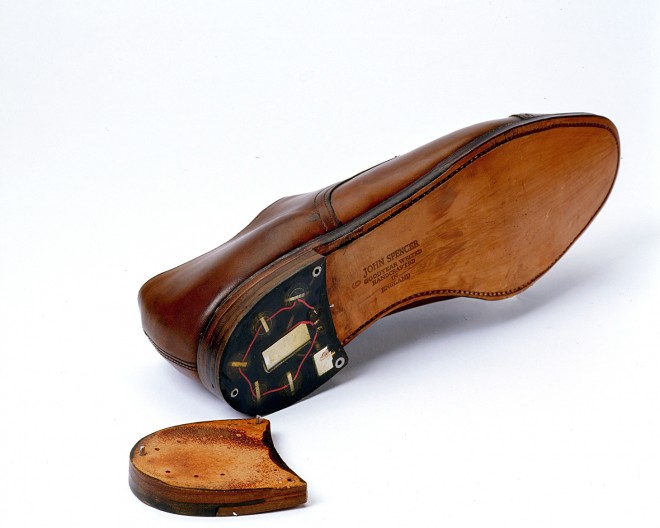
Shoe Bug
Spy games weren't just for the big superpowers. This shoe transmitter was used by the Romanian Secret Service, or Securitate, in the 1960s to 1970s to spy on American diplomats.
Diplomats, reluctant to purchase clothing locally, would have dapper shoes flown in. The spy agency would intercept the shoes at the post office and install a bug and transmitter in the heel to monitor the diplomat's conversations. The transmitter wouldn't be detected during an electronic sweep of the diplomat's office for bugs unless the diplomat was in the room at the time the sweep occurred.
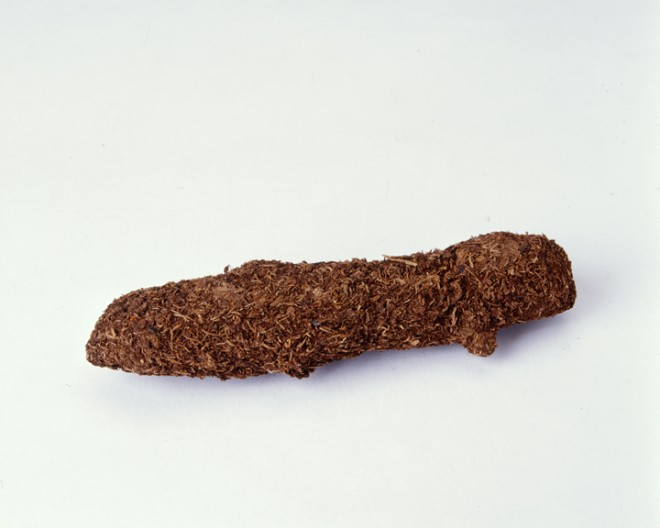
Turd Transmitter
This CIA turd transmitter, issued around 1970, was actually a homing beacon that transmitted a radio signal to pilots overhead to help direct them to bombing targets and reconnaissance sites.
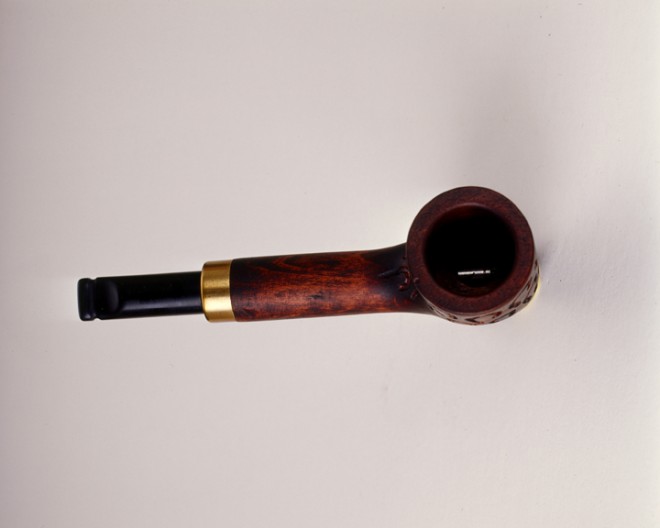
Pipe Pistol
Issued by British Special Forces during World War II, this pipe could fire a small projectile designed to kill a person at close range. The weapon fired by twisting the bowl while holding the stem.
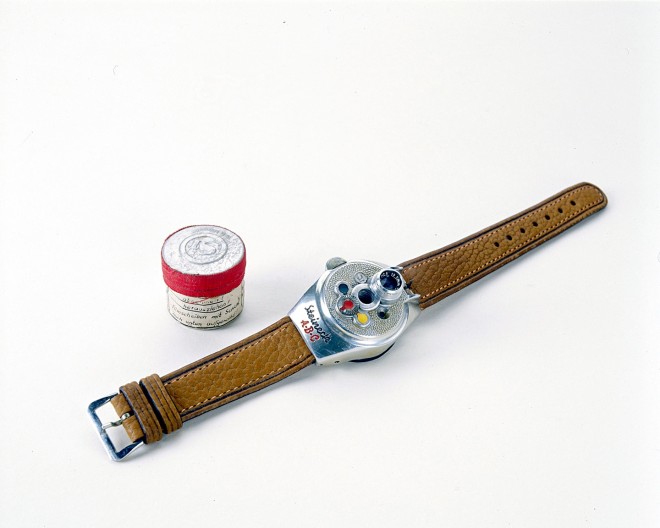
Steineck Watchcam
This Steineck watchcam, a product of post-World War II Germany, allowed an agent to snap pics while appearing to check the time — no easy feat since there was no viewfinder on the device. The film disk, about an inch across, could produce eight exposures.

Tree Stump Bug
In the early 1970s, U.S. intelligence agents concealed a bug in an artificial stump and planted it in a wooded area outside Moscow to eavesdrop on radar and communications signals of a Soviet missile system.
The intercepted signals were stored and then transmitted to a satellite passing overhead, then passed to a ground site in the United States. The top of the stump appeared to observers to be opaque, but was actually transparent so that sunlight could filter through and charge the device's solar batteries.
The KGB eventually discovered the bug.
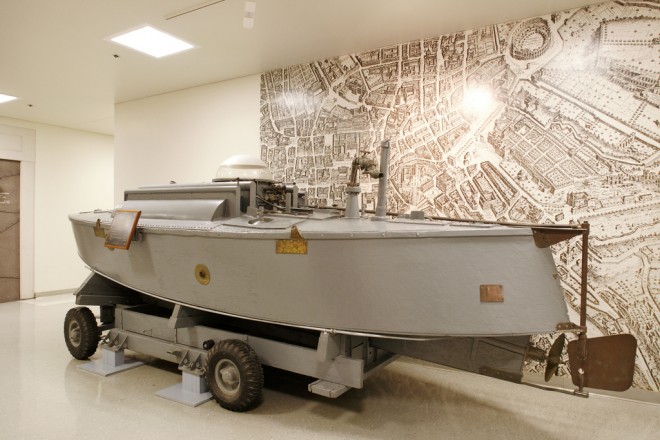
CIA Semi-Submersible
The CIA designed this two-man semi-submersible in the 1950s. It carried no weapons, provided cramped quarters, and required a "mother ship" for transport and recovery, but it could slip into regions that normal ships could not.

Fountain Pen Camera
When even a pocket camera was too conspicuous, this fountain pen camera did the trick. Issued by the CIA in the late 1970s, this fountain pen was one of three different designs created to conceal a Tropel lens. The others included a key chain and a cigarette lighter.
Designed specifically for photographing documents, devices like this were used by Aleksandr Ogorodnik, codenamed Trigon, who was a senior Soviet diplomat recruited by the CIA in the 1970s. Ogorodnik passed on hundreds of classified documents to the U.S. before he was caught by the KGB. He committed suicide using a poison pill from the CIA before the KGB was able to force him to sign a confession.
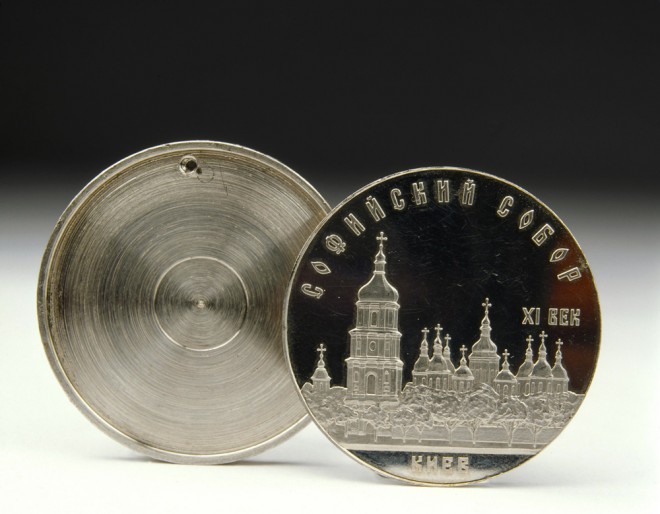
Coin Cache
Issued by the KGB beginning in the 1950s, this hollow coin could conceal microfilm and microdots. It was opened by inserting a needle into a tiny hole in the front of the coin.

Coal Bomb and Camouflage Kit
This lump of coal, issued in the 1940s by the Office of Special Services, precursor to the CIA, concealed explosives that, when shoveled into a boiler fire, would explode.
The accompanying camouflage kit allowed an agent to paint the coal the same color as local coal in order to blend in.

Glove Pistol
Issued by the U.S. Navy during World War II, this pistol allowed an operative to take out the enemy without ever removing his gloves. To fire the pistol, the wearer simply pushed the plunger against the victim's body.
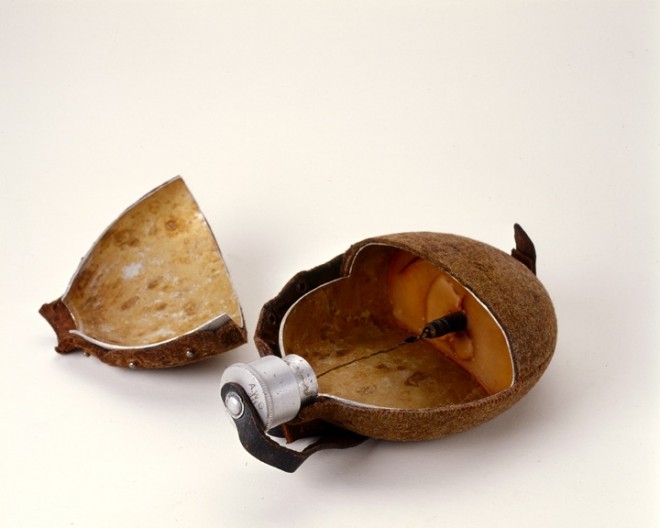
Canteen Bomb
This World War II-era canteen from U.S. Army intelligence concealed explosives that could be used by resistance groups to sabotage encampments behind enemy lines.
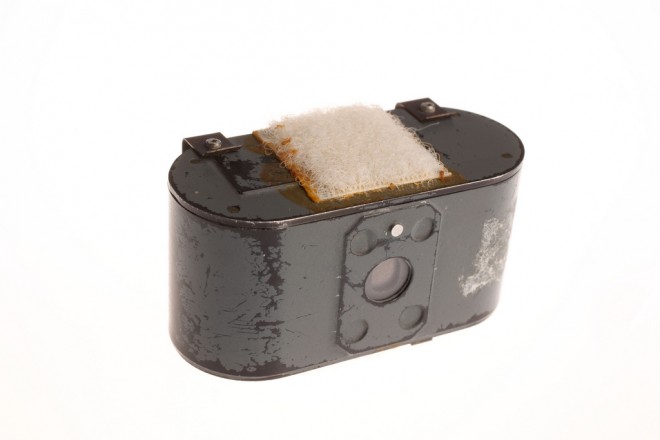
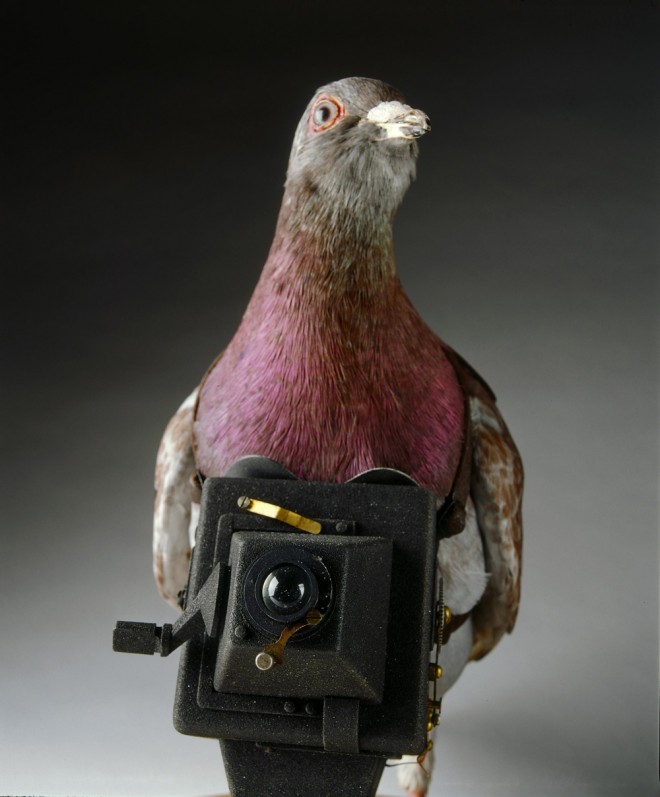
Pigeon Spy Cam
Cameras were used widely to photograph troops and fortifications for the first time in World War I, allowing spies to study enemy weapons and generate topographical maps.
But how to get a camera into enemy territory without endangering the life of a pilot? Enter patriotic pigeons outfitted with tiny cameras that could swoop over military sites and snap photographs without being noticed.
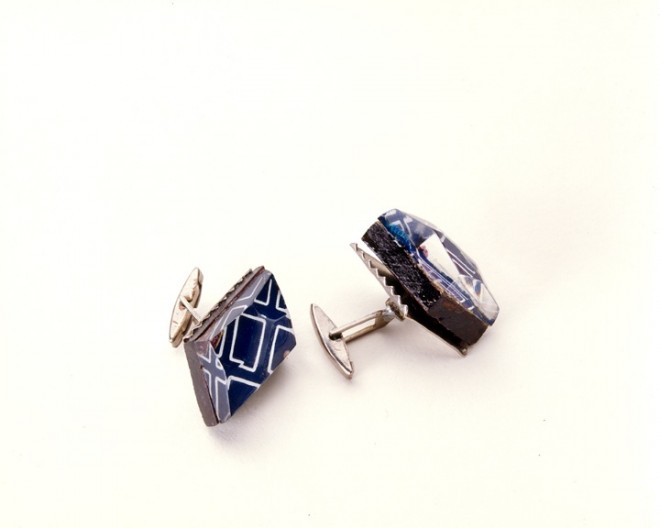
Cufflink Cache
Issued by the KGB in the 1950s, the hollowed base of these cufflinks could be used to smuggle microdot film across a border.
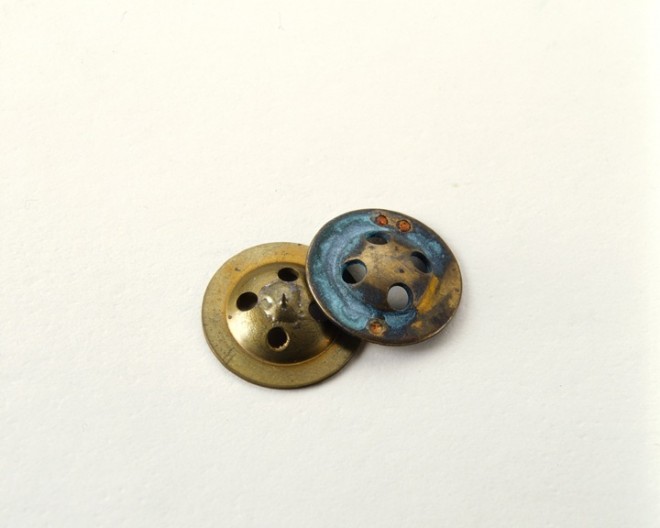
Fly Button Compass
This button compass, sewn onto the fly of a pair of pants, could help a spy navigate his way to a border. The face of the compass spun on a pin to indicate north (the two dots) or south (one dot).
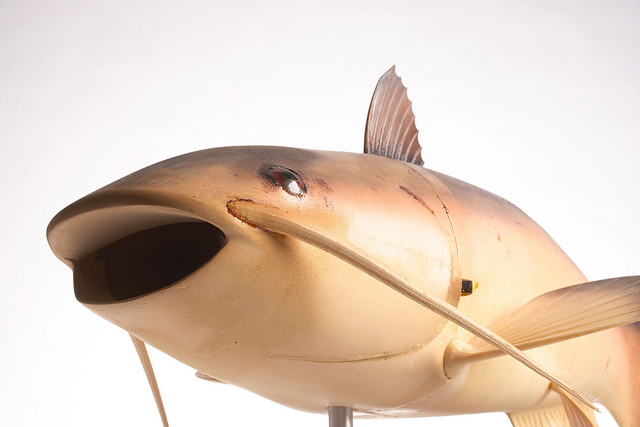
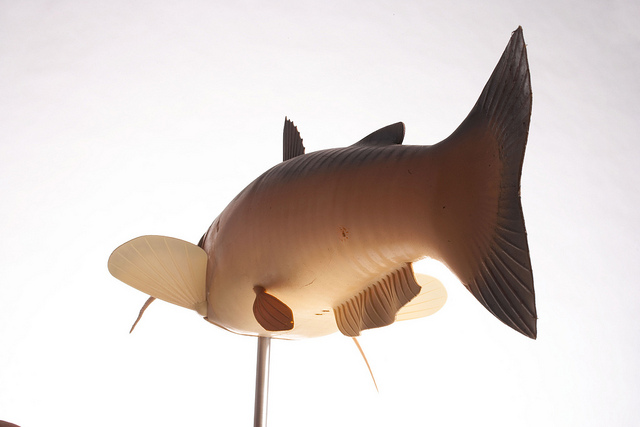
Robot Fish "Charlie"
CIA's Office of Advanced Technologies and Programs developed the Unmanned Underwater Vehicle (UUV) fish to study aquatic robot technology. The UUV fish contains a pressure hull, ballast system, and communications system in the body and a propulsion system in the tail. It is controlled by a wireless line-of-sight radio handset.
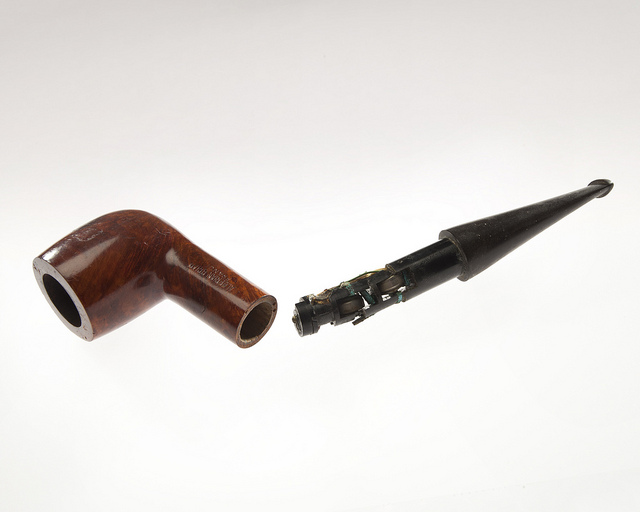
Radio Receiver Concealment
A subminiature radio receiver is concealed in this modified pipe. The user hears the sound via "bone conduction" from the jaw to the ear canal.

Advanced Flaps and Seals Kit
In this “flaps and seals” kit for advanced users, tools handmade of ivory in a travel roll were used for the surreptitious opening of letters and packages during the 1960s.
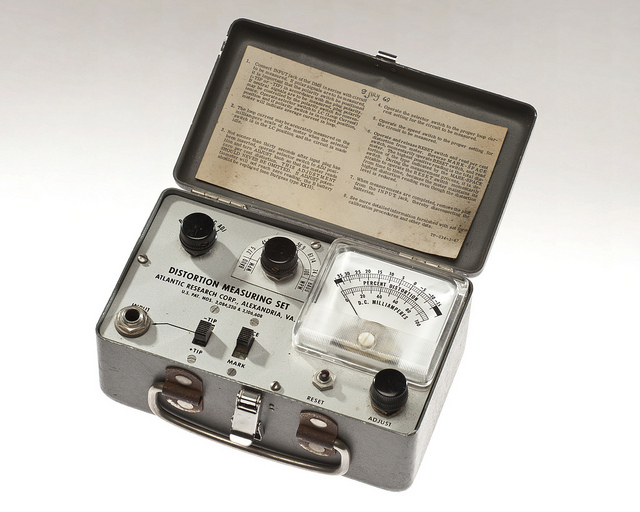
Distortion Measuring Set
Atlantic Research Corporation’s distortion measuring set was used to analyze the percentage of distortion on a communications circuit in Bangkok.

Escape Map
Printed on silk, this escape map could be folded compactly for concealment (or worn smartly as a scarf) and wouldn't rustle when opened and closed. It was printed with waterproof dyes so the colors wouldn't run if an agent had to make a sudden water-borne escape.
Continued...
Last but not least, the umbrella. Seriously, what gadget is cooler than this?
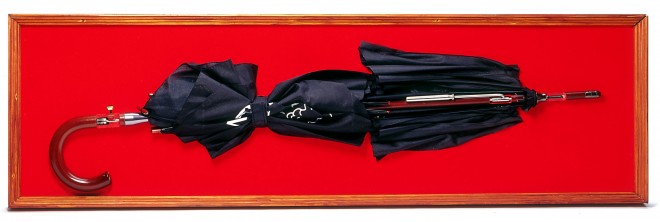
Spy Umbrella
I hope you enjoyed viewing these as much as I did and can share anything you may know about the subject. I had to make a third post to fit everything so forgive me. Close all your blinds and have a nice day!

Spy Umbrella
Perfect for a mad Mary Poppins or a gentleman assassin, this KGB-issued umbrella could retard rain or fire a poison pellet. A similar device was used to kill Bulgarian dissident writer Georgi Markov on the streets of London in 1978.
Markov was waiting for a bus to go to work when he felt a sting on the back of one leg and turned to see a man lifting an umbrella from the ground. He died three days later of poisoning from ricin. An autopsy uncovered a pellet the size of a pinhead embedded in his leg.
I hope you enjoyed viewing these as much as I did and can share anything you may know about the subject. I had to make a third post to fit everything so forgive me. Close all your blinds and have a nice day!
edit on 21-11-2014 by eisegesis because: (no reason given)
new topics
-
VirginOfGrand says hello
Introductions: 37 minutes ago -
Should Biden Replace Harris With AOC On the 2024 Democrat Ticket?
2024 Elections: 1 hours ago -
University student disciplined after saying veganism is wrong and gender fluidity is stupid
Education and Media: 3 hours ago -
Geddy Lee in Conversation with Alex Lifeson - My Effin’ Life
People: 4 hours ago -
God lived as a Devil Dog.
Short Stories: 5 hours ago -
Police clash with St George’s Day protesters at central London rally
Social Issues and Civil Unrest: 6 hours ago -
TLDR post about ATS and why I love it and hope we all stay together somewhere
General Chit Chat: 7 hours ago -
Hate makes for strange bedfellows
US Political Madness: 9 hours ago
top topics
-
Hate makes for strange bedfellows
US Political Madness: 9 hours ago, 17 flags -
Who guards the guards
US Political Madness: 12 hours ago, 13 flags -
Police clash with St George’s Day protesters at central London rally
Social Issues and Civil Unrest: 6 hours ago, 8 flags -
TLDR post about ATS and why I love it and hope we all stay together somewhere
General Chit Chat: 7 hours ago, 6 flags -
University student disciplined after saying veganism is wrong and gender fluidity is stupid
Education and Media: 3 hours ago, 5 flags -
Should Biden Replace Harris With AOC On the 2024 Democrat Ticket?
2024 Elections: 1 hours ago, 4 flags -
Has Tesla manipulated data logs to cover up auto pilot crash?
Automotive Discussion: 14 hours ago, 2 flags -
Geddy Lee in Conversation with Alex Lifeson - My Effin’ Life
People: 4 hours ago, 2 flags -
God lived as a Devil Dog.
Short Stories: 5 hours ago, 2 flags -
VirginOfGrand says hello
Introductions: 37 minutes ago, 0 flags
14

